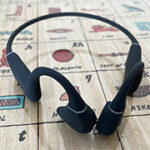NANK, formerly known as Naenka has recently made available what looks to be the perfect swimming-suitable pair of headphones, at least on paper. The NANK Runner Diver2 relies on bone conduction to reproduce your favorite tracks and, as an expected consequence, the two ‘buds’ are interconnected, limiting the risk of falling out.
| NANK Runner Diver2 | |
|---|---|
| Naenka.com | Check Product |
| Use code MBReviews for 215% | |
| Amazon.com | Check Offer |
Also, the vibrations through bone are a far better medium for transmitting sound when underwater than using traditional speakers. But, I am aware that some other brands have claimed that they’ve created swimming earbuds, only to find out that the tech they rely on for data transmission, Bluetooth, doesn’t work under water.
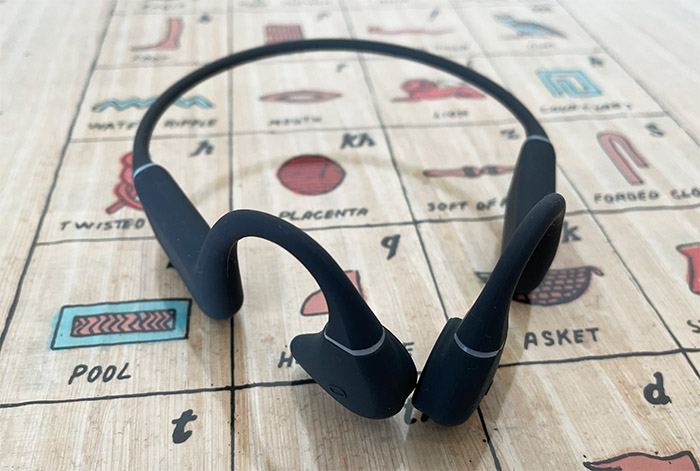
So what did NANK do differently? It still relies on Bluetooth to connect to an audio source, but the NANK Runner Diver2 has local storage where you can add a fair amount of tracks (32GB). It’s a very simple solution which works perfectly fine. If you’re not familiar with this type of headphones, know that the bone conduction technology is exactly what it sounds like.
There is a vibrating driver on each side which pushes vibrations through the jaw bones directly into the inner ear. This way, the ear can remain open for environmental awareness and also, a device such as the NANK Runner Diver2 can be a great way for people with hearing impairments to be able to listen to music. But, how good are the NANK Runner Diver2 when compared to its competitors? Let’s find out.
Build Quality and Design
As I mentioned in the intro, the NANK Runner Diver2 follow a similar design to other sports-focused headphones, relying on a flexible band to attach the two drivers together. And the entire device is covered by a soft rubber-like material which will make it soft to the touch, a very useful trait considering that it gets in contact with the skin a lot more than your usual TWS earbuds.
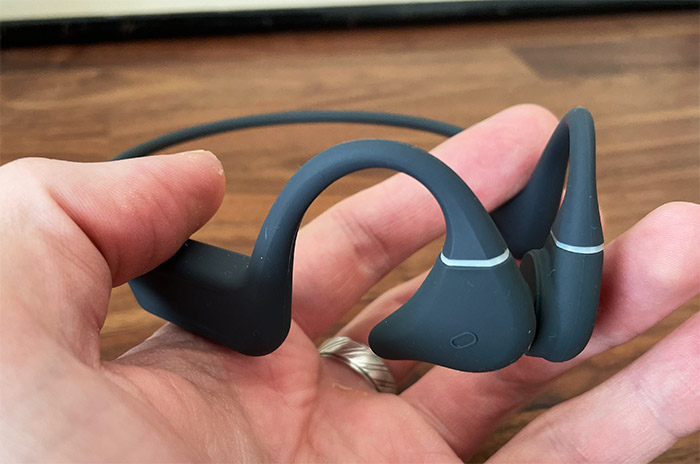
There are two main parts on each side of the NANK Runner Diver2, one is the part which gets close to the opening of the ear which encapsulates the vibrating driver, the other sits on the back side of the ear and it usually includes the physical controls and the inner battery. It’s a very similar approach to the likes of Haylou PurFree BC01 and Lite, but it’s worth mentioning the extra elongated ‘fins’. Do they serve a purpose beyond just aesthetics?
I am fairly sure that at least one of them holds a microphone, but it is a design choice since the manufacturer wanted to recreate the look of a seahorse. On the right side, positioned on the area that goes on the back of your ear, you can find all the physical controls. There’s the Volume Up and Down buttons, while in the middle, there’s the multi-function button. As expected, a single click on the volume buttons will either raise or lower the volume of the audio, but a long press will either move to the next track or to the previous one.
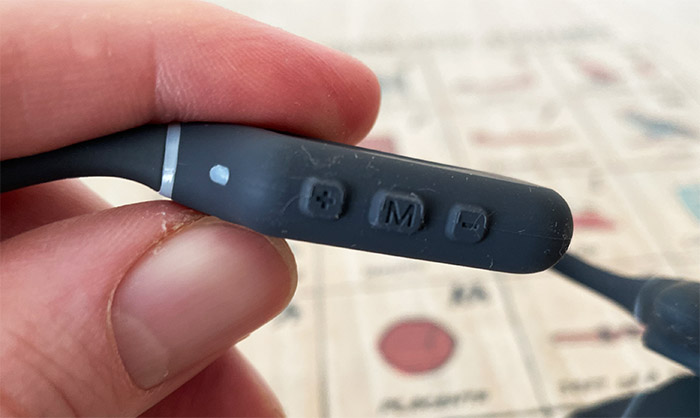
Long-press the M-button to turn or off the bone conduction headphones, click it once to Play or Pause a track and triple click it to switch to the MP3 mode (and back to Bluetooth). It’s also possible to answer a call with a single click of the button and to reject the call with a double click. Another curious mode that developers have added to the NANK Runner Diver2 is the Random play which can be enabled with four clicks of the M-button, so if you get bored by the same songs playing one after the other, you can add some randomness to it.
It’s not really the best system and perhaps a dedicated button for the local storage would have been better. Still on the controls section, we can see the four magnetic pins which attach to the charging cable. I remain a fan of USB-C, as long as it’s properly implemented because I have seen cases where it could lead to water damage (as on the PURFREE Lite). So, it can be done, just that NANK decided to not pursue it (landfill waste goes ahoy!). Now the question is just how well insulated are the NANK Runner Diver2 and how close are they to being waterproof?
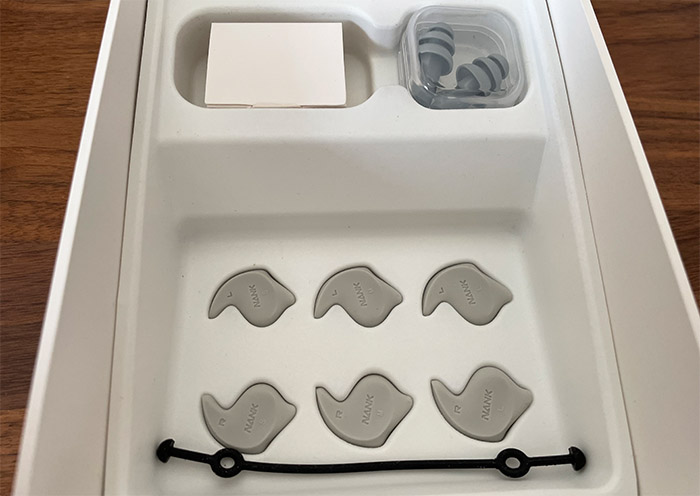
The manufacturer says that it used a three-layer seal and that the headphones are 1P68-rated. This means that they should indeed survive water immersions and swimming should not damage them, nor should sweat. Before moving forward, I do need to mention the accessories. Inside the package, you can find the silicone adjustable straps to make sure that there is absolutely no chance that the headphones will fall off while swimming. And then I also saw three pairs of what NANK calls ‘sound quality enhancer’.
Also, there are a couple of earplugs, but these sound quality enhancers serve a very similar purpose. The advantage is that you don’t have to push them into the ear canal, so no irritation, which is excellent.
The Internal Hardware and Connectivity
The NANK Runner Diver2 rely on 16mm dynamic vibrating drivers, same as on the Lenovo X7 bone conduction headphones (bet you didn’t know that Lenovo entered this market as well). And as for the platform, the manufacturer did not disclose the main chip, but we do know that the headphones do use Bluetooth 5.3.
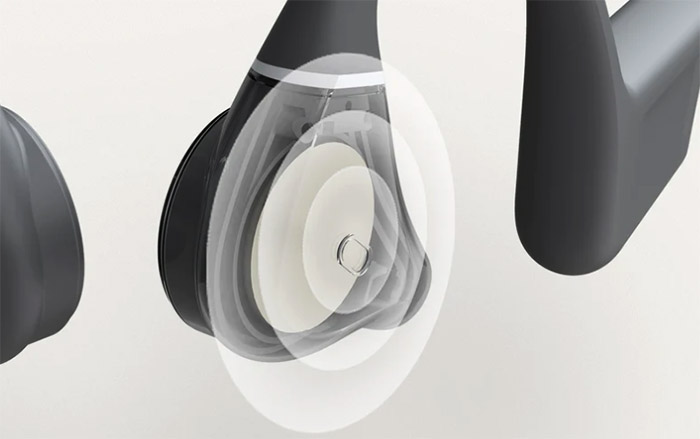
This means that the range is about 30 feet with some walls in between the audio source and the headphones, and it is possible to stream high quality audio files, but the codec support is a bit scarce. It’s possible to use SBC and AAC. One other cool feature is the NFC pairing which makes connecting the NANK Runner Diver2 to a phone very easy (just a touch). But is there support for Bluetooth Multipoint? Yes there is, you can pair the headphones to up to a couple of devices at the same time.
The NANK Runner Diver2 has Bluetooth Multipoint
There is no special requirement or a dedicated button to use Bluetooth multipoint. All you need to do is pair the NANK Runner Diver2 to a device, then turn the Bluetooth off, after that connect the headphones to the secondary audio source device. Turn on the Bluetooth on the first device and the NANK Runner Diver2 should now be paired to a couple of audio sources at the same time.
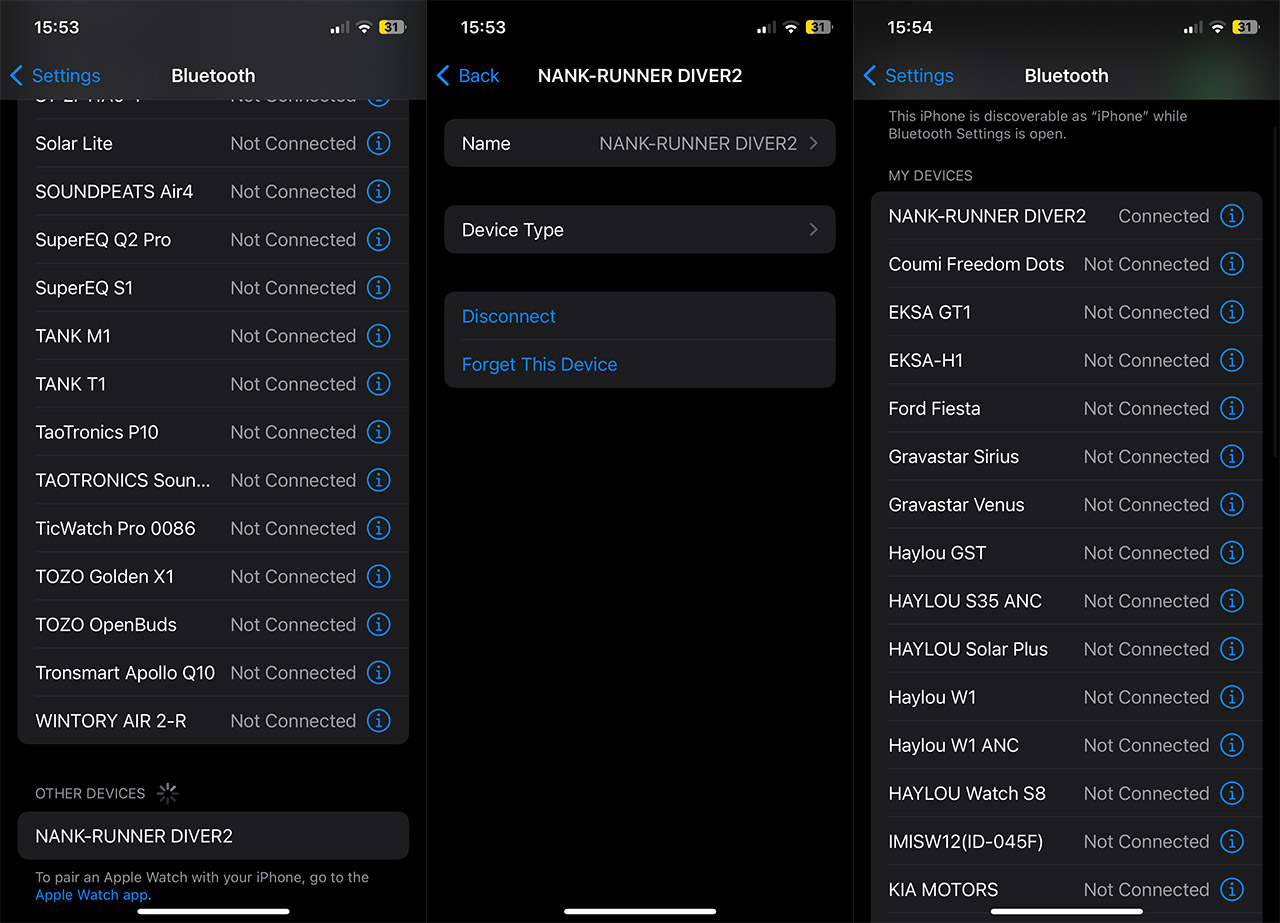
The Sound Quality
Bone conduction headphones aren’t that great with bass reproduction because it easily turns into a massage for your cheekbones instead of deep booming sound. There is also quite a bit of audio bleed, a common behavior on the air conduction earbuds as well. The NANK Runner Diver2 claim that they managed to get a thick bass and, using the OT leakage reduction technology, they also fixed the audio bleed. Let’s see if that’s truly the case.
And to do so, I first checked a few technical aspects of the NANK Runner Diver2, such as the driver quality and the driver matching. For the former, a tone will be played moving from a low frequency to a higher one, and back. The idea is to hear no buzzing and, in the case of the NANK Runner Diver2, the sound seemed clear since, well, it’s just vibrations through bones. As for the driver matching test, the headphones managed to keep the sound central, with no deviation.
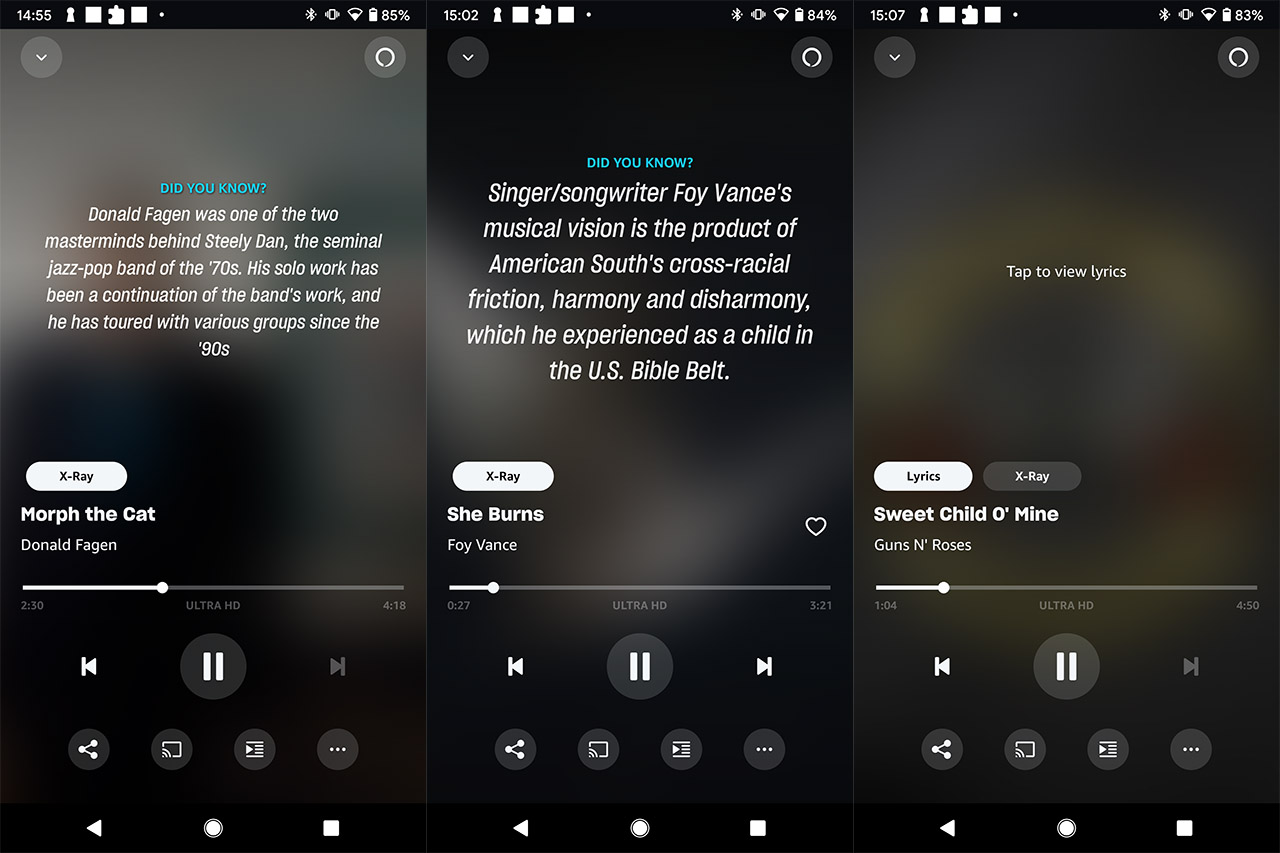
Next, I listened to a few binaural songs to get an initial idea about the sound quality and I did keep the volume fairly high, at about 80%. I could easily tell where each singer and instrument was positioned, with a decent amount of depth as well. The sound stage is not very wide and everything feels a bit quiet. I did choose some mid-focused binaural songs though, so I decided to go through the usual list of tracks. The first one is the low-bass-focused track Faded by Zhu and it’s a fairly unique experience. As expected, the bass is not heard, but felt and the way you ‘feel it’ is as vibrations in the cheeks.
Still, it’s much less noticeable that with the Haylou PurFree BC01. If you want a better experience use the provided ear covers – the bass will quickly come to life. Next, I switched to the mid-bass Morph the cat by Donald Fagen and once again, if you don’t use the sound quality enhancers, it’s going to sound bland due to the almost complete lack of bass. Cover the ears and the sound becomes rich and detailed. The voice is a tiny bit forwarded, but I guess it’s a way to make it more noticeable if you listen to similar songs with the ears uncovered. Then, I moved to the track She Burns by Vance and even when not using the sound quality enhancers, the song still sounded good.
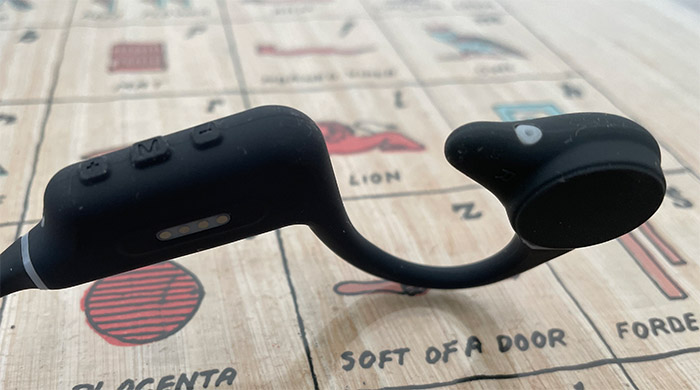
Sure, the vibrations in the cheeks aren’t really a proper alternative to the bass, but for a pair of bone-conduction headphones, it sounded very good. That’s also the case of Breathin by Ariana Grande. The voice is forwarded with the ears covered, but it’s perfectly placed when the ears are open to the environmental noise.
Lastly, I listened to Sweet Child o Mine by Guns n Roses and it’s a fun listen as long as you don’t mind replacing the lower frequencies with tingly cheeks. Is the sound bleed actually better contained than on other brands? I think so, although if the volume is very high, 80-90%, anyone near you will get a grasp of what you’re listening to.
The MP3 Player
Before anything else, know that the NANK Runner Diver2 doesn’t support only MP3 files, but also WAV and FLAC formats, as well as M4A. So it is very much possible to listen to higher quality audio tracks without dealing with the limitations of Bluetooth. The only issue, if you could call it that is that the transfer rate is very low, like below 1Mbps.
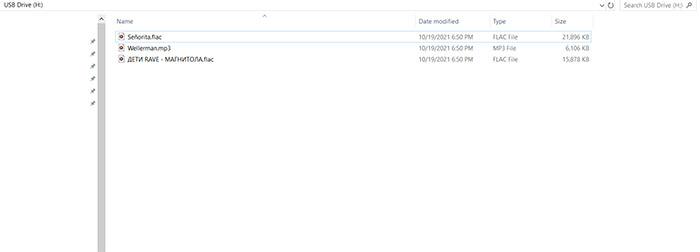
I regularly see 700Kbps which may not be that big of a deal with one, two tracks, but try moving 10GB or more and it becomes a pain.
The Call Quality
The call quality using the NANK Runner Diver2 truly depends on how you’re wearing the headphones. If you have your ears covered, it’s very easy to properly hear what the other person is saying. Otherwise, even at max volume, I did have some issues concentrating on the words when I was near a busy street or in a coffee shop. Interestingly, the caller did not complain about hearing my voice even if I was in a crowded space. It’s not perfect audio quality, since the halo effect is present, but it’s better than expected.
The Battery Life
The NANK Runner Diver2 are equipped with an 180mAh battery and the manufacturer claims that it should last for up to 10 hours.
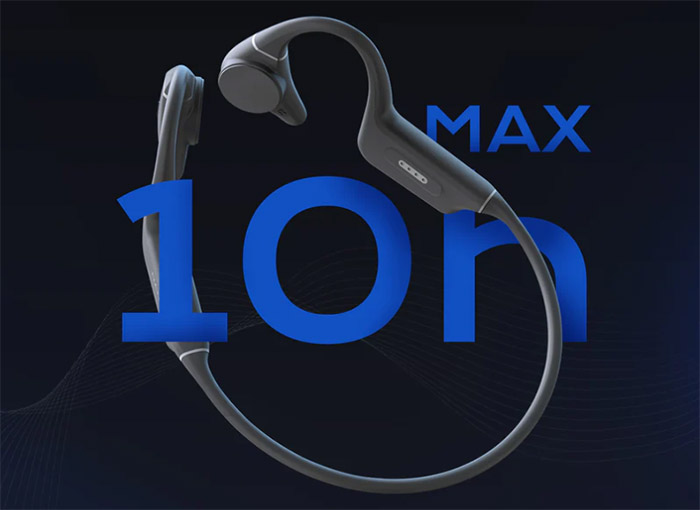
I suppose it’s a possible performance as long as you don’t push the volume up to 80 percent all the time as I did. This way, the battery lasted for about 7 hours and a half.
The Conclusion
There’s a lot to like about the NANK Runner Diver2. The build quality seems good and it’s entirely possible to swim with this pair of headphones, although only for a limited time (IP68-rated). The battery life is good and I did like the increased local storage for ‘offline’ music listening. The sound quality is good as long as you are in a quiet area or if you cover your ears (NANK is aware of this since it added the sound quality enhancers), but I suppose this is the tradeoff for relying on the bone conduction technology.

Mark is a graduate in Computer Science, having gathered valuable experience over the years working in IT as a programmer. Mark is also the main tech writer for MBReviews.com, covering not only his passion, the networking devices, but also other cool electronic gadgets that you may find useful for your every day life.

